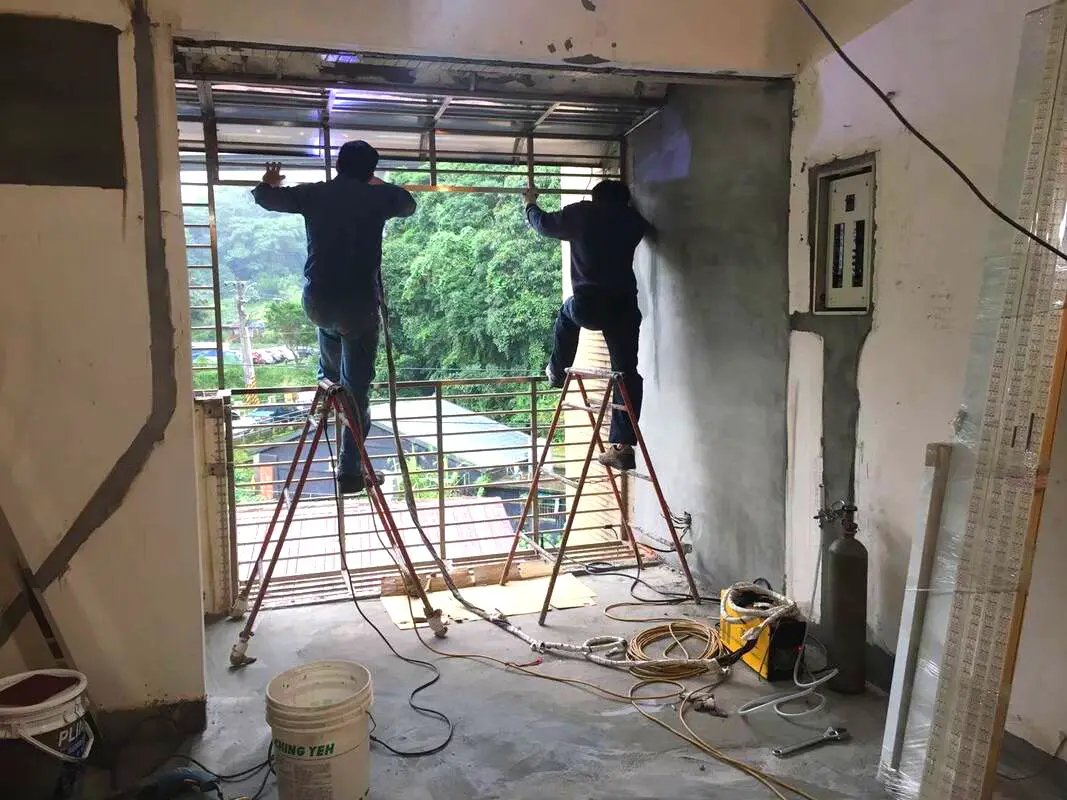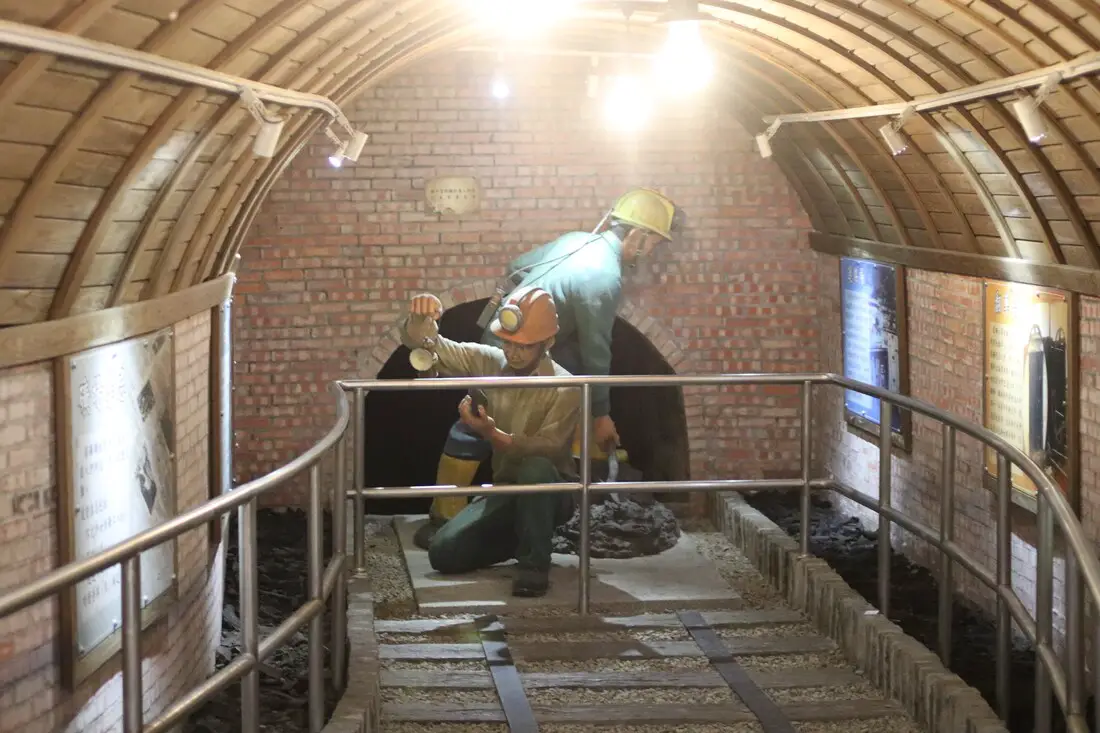|
How do you renovate a house in Taiwan? With lots and lots of money. Blog over.
Just kidding. It is much more complex than that, and you will have to put in a lot of time, effort, planning, and decision making on your part. In this post, I will share with you in detail my personal experience renovating an old apartment in Taiwan for your reference. Hopefully this will be helpful to someone considering buying an old house or doing renovations themselves as a foreigner in Taiwan.
17 Comments
Hexing Coal Mine in Xinyi District of Taipei is a refurbished coal mining tunnel that has been opened to the public. is a great place to get familiar with the extinct coal mine industry in Taiwan that is close to Taipei's city center.
History of Coal Mining in Taiwan: Before I show you my adventure, I’d like to give a background of the coal mining industry in Taiwan. If you aren’t interested, you can just skip this section. Coal mining in Taiwan started during the Dutch rule, starting in Keelung and Tamsui. The Dutch started mines there, but didn’t have sufficient transportation infrastructure to move large amounts of coal. The Koxinga era didn’t see much coal mining. After the Qing dynasty took back Taiwan following Koxinga and his son’s death, the government strictly banned mining of any kind in order to restrict the people from hiding in the mountains and starting rebellions. Despite this, coal was still mined and sold in on the black market in Taiwan. During and after the Opium wars, many English and Americans scouted Taiwan for possible coal deposits. In 1864, despite the ban on coal mining, there was at least 4315 tons of coal exported out of Taiwan. Pressure from western countries to open ports in Asia that had water and coal available to power steam ships forced the Qing government to finally allow legal coal mining in 1870. After the ban was lifted, the size of coal mining operations was still very small. In 1874, due to Japanese influence, Liu Mingchuan convinced Beijing to allow advanced mining machinery in Taiwan, starting in Baodouzi, Keelung, and new mines were started under government control. During this time, many miners died due to poor and unsanitary working conditions and the fact that the government officials running the mines were inexperienced and did not run effective operations. During this time, infrastructure and railways were lacking in Taiwan, halting transportation of coal. By 1892 after the Sino-French war, government owned mines were closed and the industry became privatized. In 1895, Taiwan produced more than 10,000 tons of coal. By this time, Liu Mingchuan had constructed the Keelung-Xinxhu railway, helping alleviate the coal transportation problem. In 1895 Japan took control of Taiwan and Penghu as a result of the Sino-Japanese war, and began to survey the forests and geography to maximize capitalist gains for the empire. Coal would be an important part in industrializing the Empire, as it was the major fuel source at the time. In 1896 Japan opened the coal mining industry to the public, and the next year the price of coal doubled, as demand increased. But as local know how and technology was lacking, imported coal from Japan was actually cheaper than producing it in Taiwan. However in 1906 the coal industry in Taiwan gradually improved. New mining machinery moved to Tianliao, Keelung to support Japan’s Naval fleet. Sugar factories in southern Taiwan also needed a constant supply of coal. During the First World War, the Empire of Japan became an important supplier of coal to western countries fighting in the war, and Taiwan’s coal exports gradually increased. In 1917-1918, Japan opened 194 new coal mines in Taiwan. They also built the Pingxi Railway which became the most productive site for coal mining, in its heyday producing 220,000 tons of coal per year. (The Taiwan coal mine museum now lays here, along withHoutong cat village). However, after World War I ended, the demand for coal declined, many mines closed, and there was widespread overproduction. But as industrialization continued in Taiwan, so did the demand for coal. To keep production going constantly, Japan provided subsidies to coal mines. At the start of the second Sino-Japanese war, demand for coal rose dramatically, as did the price of coal. But also due to losses of manpower during the war, coal production saw a huge drop. In 1945 Japan lost the war and Taiwan and Penghu were given back to China. Not long after this, the remaining government owned mines were transformed into the Taiwan mining company, but by then mining had all but stopped. However by 1949 after the KMT retreated to Taiwan, Taiwan became an important economic partner with America, and coal production began to soar to 1,650,000 tons of coal in 1951, mainly to fuel Taiwan’s coal power plants and other large industries. With economic support from the USA, new mines started opening. In 1960 Taiwan produced 4 million tons of coal. Due to demand and the free market, coal mines gradually started closing and production went down, until by 1964 Taiwan produced only 2.8 million tons of coal. In 1969 Taiwan Power started using gas power plants which were cheaper than coal, lowering demand. By 1977 Taiwan had produced only 2 million tons of coal. During this time, Taiwan also improved safety regulations for coal mines, but accidents still kept happening, forcing the government to close quite a few mines. Here is a list of mining incidents in Taiwan. The lone survivor of one1984 mining incident that killed 93 people survived by cannibalism and drinking pee over a period of 90 hours inside the mine. He later said that if he had to do it all over again, he would still have eaten his coworkers. Local coal soon became more costly to mine than just importing it. In the year 2000, Sanxia’s Lifeng Mine shut down operations, and Taiwan’s mining company closed, and thus all coal mining in Taiwan effectively stopped. History of Xinfeng Coal Mine: Xinfeng Coal Mine was one of many mines around Taipei, as there are many coal seams in the mountains of northern Taiwan. Once the coal mining industry shut down in the late 1990's, this mine shut down too and was left abandoned for a number of years until the area was restored by Taipei City in about 2005. Now it is a well kept tourist attraction, where one can enjoy the history of the mine as well as the natural scenery nearby. Hours: 9 AM to 5 PM every day Price: Free Activities in Taipei: Don't forget that there are many activities available in Taipei such as Indoor Skiing, Rock Climbing, Hiking, Wakeboarding, Surfing, Speedboat Surfing, SUP / Paddle Boarding, Diving, Snorkeling Kayaking, Canoeing, Water Biking, River Tracing / Canyoneering, ATVing, Horse Riding, Cooking Class, Archery, Ice Skating, Roller Skating, Tree Climbing, Urban Camping, Glamping, Motorcycling, Motorbike Tour, Dragon Boat Racing, Escape Room, Shen'ao Rail Bike, Laser Gun Experience, Batting Cages, Bowling, Paintball, Flight Simulation Experience, Taipei Tram Driving Experience, Rail Simulation Experience, Taipei 101 Observation Deck activity, Strawberry Picking, Professional Photo Shoot, Body Relaxation SPA, Night Tour, Calligraphy Workshop, and more on Tripadvisor here, Klook here, or KKday here. Hotels in Taipei: High end: We have stayed at and recommend the Yuanshan Grand Hotel, once the tallest building in Taiwan and still the most grand (book on Booking.com here, Tripadvisor here, or Agoda here). We have also stayed at and recommend the Grand Hyatt (book on Booking.com here, Tripadvisor here, Agoda here, or Hotels.com here), Marriot (book on Booking.com here, Tripadvisor here, Agoda here, or Hotels.com here), Sheraton (book on Booking.com here, Tripadvisor here, Agoda here, or Hotels.com here), Shangri-la (book on Booking.com here, Tripadvisor here, Agoda here, or Hotels.com here), and Regent (book on Booking.com here, Tripadvisor here, Agoda here, or Hotels.com here), which are all very high quality hotels in the middle of Taipei City. We also recommend Fullon Hotel which has locations in Tamsui and Fulong near the beach (book on Booking.com here, Tripadvisor here, Agoda here, or Hotels.com here). Budget Hotels: We have stayed at and also recommend Fu Chang Hotel in Ximending, which is within walking distance of Ximending shopping district (book on Booking.com here, Tripadvisor here, or Agoda here). We have also stayed at and recommend Hai Xia Your Home which is right in front of Fulong Beach (book on Booking.com here, Tripadvisor here, Agoda here, or Hotels.com here). Looking for a hotel? We recommend booking through Booking.com here, which provides the best quality selection of accommodation in Taiwan. Find out where to stay in our Taiwan hotels guide or search for the best hotel deals in Taiwan here. How to get there: By MRT: (Mass Rapid Transit, Metro train, subway) – Easily gets you around Taipei and Kaohsiung. You can purchase a discount easy card to use on the MRT from Klook here or KKday here. You can also book an MRT travel pass on Klook here. By Bus: Buses can be tricky. Long-range buses such as Ubus and King Bus are easier to understand and cheaper than the local train. They can take you to the city center of every city throughout Taiwan and to remote tourist destinations such as sun moon lake. A long-range bus from Taipei to Kaohsiung is about 500 NT. You can also book tickets to travel to Shifen via inter-city bus on Klook here. You can also book a Taipei Sightseeing: Hop On, Hop Off Open Top Bus on TripAdvisor here. By Taxi: You can take short rides for about 150 NT, or hire a Taxi for a day for around 150 USD. By Car: If you are looking for car rentals, you can also search Qeeq here, Klook here, or KKday here. You can also check out our car rental guide here. By Scooter: Looking for scooter rental in Taipei? You can search on Klook here or KKday here to search for options. You can also check out our scooter rental guide here. By Bicycle: Cycling is the best way to enjoy Taiwan's landscapes if you have the time and energy. Looking for bicycle rentals in Taiwan? You can use Taiwan's many Youbike sharing stations, or search for rentals on KKday here, and search for tours on Klook here. You can also check out our Taiwan cycling guide here. ​You can also book a Sunset Riverside Bike Ride and Historical Tour, 4 Hour Cycling in Taipei, Ultimate 8-Hour Cycling City Tour, or Taipei City Bike Tour with Night Market Experience on TripAdvisor here. For more information, check out our Taiwan transportation guide here. Map: See below:
Wuling Farm is a recreational farm in the mountains of Taichung, Taiwan. It is one of the only places that you can spot the endangered Formosan Landlocked Salmon in the wild, and includes flowers, fruit trees, tea plantations, cherry blossoms, hikes, camping, waterfalls, and wildlife to enjoy. It is a great place to experience Taiwan's high mountain ecology.
Background: Originally the Qijia Valley where Wuling Farm sits was home to seven families of the Ayatal Tribe, and aboriginal peoples lived here starting over 4,000 years ago. The aboringal people were relocated to Sqoyaw Village in the 1950s. Wuling Farm was established in 1963 as a way to provide a living for retired KMT veterans. The farm's original purpose was to plant temperate fruit trees and vegetables. Starting in 1989, the farm began tourist acticites, such as building a campground, tea houses, gardens, hotels, and a tourist service center. The farm sits at about 2000 meters above sea level (6,561 feet). Website: https://lang.wuling-farm.com.tw/lang/index.php Price: 160 NT per person to enter 50 NT for cars 10 NT for scooters Accommodation: We recommend staying overnight because you will likely have to travel a long time to get here (4 hours from Taipei), and staying overnight lets you maximize your time here. You can book online for one of the following accommodation options: Wuling National Hostel (2,000 NT - 8,000 NTD per night) Wuling Hoya Resort (6,000 - 15,000 NTD per night) Wuling Campground (1,000 - 2200 NTD per night) Hours: 24/7 When to go: A popular time to go is in March-April when there are cherry blossoms. Also, it can get very cold in the winter. How to get there: By Car/Scooter: It is actually faster to travel to Wuling Farm from Taipei instead of downtown Taichung, even though technically the farm is in Taichung City. From Yilan, take provincial highway 7 through Datong Township and up the mountain until you reach Wuling Farm. By Bus: Taiwan Tour Bus and Lion Travel have busses that leave from Taipei and arrive 4 hours later. Map: Please see below: |
Author 作家I am an American expat who has extensive experience living, working, and traveling in Taiwan. In my day, I had to learn many things about Taiwan the hard way. But I have come to learn that Taiwan is one of the best places in the world for Foreigners to live. This blog does not represent the opinions of every foreigner in Taiwan. I am just trying to help others learn more about this beautiful country. Categories
|





 RSS Feed
RSS Feed
